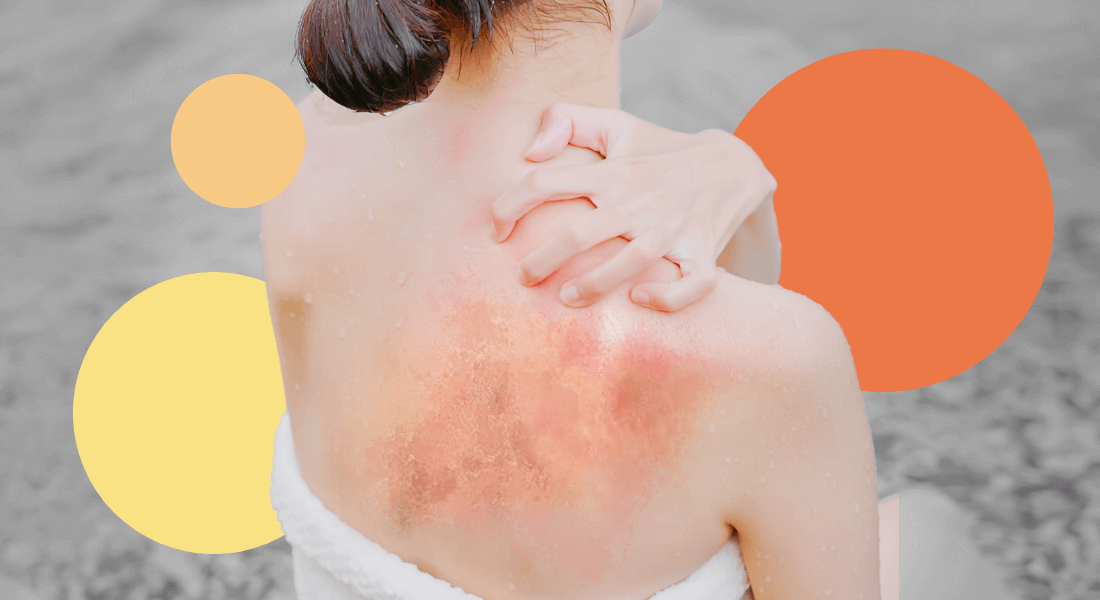Sunburn has traditionally been attributed to UV-induced DNA damage. However, a new study by the University of Copenhagen and Nanyang Technological University, Singapore, reveals that RNA, another vital cellular molecule, plays a major role in triggering acute sunburn reactions.

We have all been told to avoid direct sunlight between 12 noon and 3 p.m., seek out shade and put on sunscreen and a hat. Nevertheless, most of us have been experienced sunburn at least once. The skin turns bright red, feels irritated and needs cooling.
You may also have been told that sunburn damages the DNA. But that is not the full truth, the researchers responsible for a new study conducted at the University of Copenhagen and Nanyang Technological University, Singapore (NTU Singapore) explain.
"Sunburn damages the DNA, leading to cell death and inflammation. So the textbooks say. But in this study we were surprised to learn that this is a result of damage to the RNA, not the DNA that causes the acute effects of sunburn," says Assistant Professor Anna Constance Vind from the Department of Cellular and Molecular Medicine, who is one of the researchers responsible for the new study.
RNA is similar to DNA, but whereas DNA is long lived, RNA is a more transient molecule. A type of RNA, known as messenger RNA (mRNA), functions as the intermediate 'messenger' that carries information from DNA to make proteins - the basic building blocks of cellular components.
"DNA damage is serious as the mutations will get passed down to progenies of the cells, RNA damage happens all the time and does not cause permanent mutations. Therefore, we used to believe that the RNA is less important, as long as the DNA is intact. But in fact, damages to the RNA are the first to trigger a response to UV radiation," Anna Constance Vind explains.
The new study was conducted on mice as well as human skin cells, and the objective was to describe the impact of UV radiation on the skin and what causes these damages. The researchers found the same skin response to UV radiation exists in both mice and human cells.
A built-in surveillance system for RNA damage
mRNA damage triggers a response in ribosomes (protein complexes that "read" the mRNA to synthesise protein), orchestrated by a protein known as ZAK-alpha - the so-called ribotoxic stress response - the new study shows. The response can be described as a surveillance system within the cells, which registers the RNA damage, leading to inflammatory signalling and recruitment of immune cells, which then leads to inflammation of the skin.
"We found that the first thing the cells respond to after being exposed to UV radiation is damage to the RNA, and that this is what triggers cell death and inflammation of the skin. In mice exposed to UV radiation we found responses such as inflammation and cell death, but when we removed the ZAK gene, these responses disappeared, which means that ZAK plays a key role in the skin's response to UV-induced damage," says Professor Simon Bekker-Jensen from the Department of Cellular and Molecular Medicine, who is one of the other researchers responsible for the study. He adds:
"So you could say that everything depends on this one response, which monitors all protein translations occurring. The cells respond to the RNA damage, realising that something is wrong, and this is what leads to cell death."
Faster and more effective response
The result of the study changes our understanding of sunburn and the skin's defence mechanisms: that RNA damage triggers a faster and more effective response, protecting the skin from further damage.
"The fact that the DNA does not control the skin's initial response to UV radiation, but that something else does and that it does so more effectively and more quickly, is quite the paradigm shift," says Anna Constance Vind.
We need to understand the function of RNA damage, as it may in the long term change our entire approach to prevention and treatment of sunburn.
"Many inflammatory skin diseases are worsened by sun exposure. Thus, understanding how our skin responds at the cellular level to UV damage opens the door to innovative treatments for certain chronic skin conditions," says co-author Dr Franklin Zhong, Nanyang Assistant Professor at NTU's Lee Kong Chian School of Medicine.
"This new knowledge turns things upside down. I think most people associate sunburn with DNA damage; it is established knowledge. But now we need to rewrite the textbooks, and it will affect future research on the effects of UV radiation on the skin," Simon Bekker-Jensen concludes.






